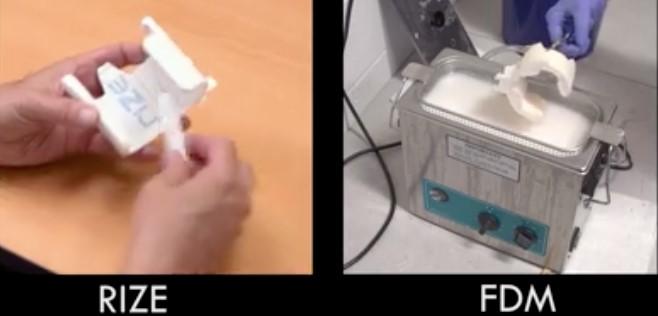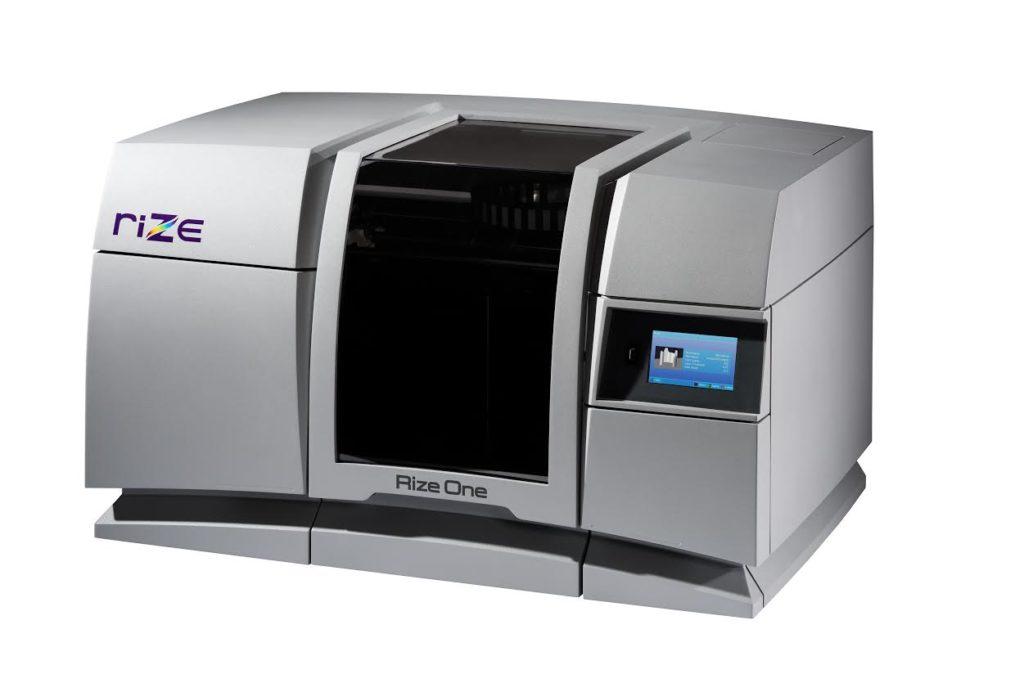 Every so often in the 3D printing industry, a company emerges seemingly from nowhere, coming out of stealth mode and ready to drop major advances on the technological scene. Last spring, Carbon took this tactic, surprising us all with their incredible CLIP technology — and just a couple of weeks ago now, Rize Inc. emerged to start telling the world about their revolutionary take on 3D printing. Rize’s dream is similar to that of many in the industry: to remove the need for post-processing. Promising to cut processing time in half, as well as significantly reducing costs and materials involved in the additive manufacturing process, this system is a sort of glowing grail for the industry. With post-processing often taking just as long as, or potentially even longer than, the time it takes to actually print a part, cutting back on this step provides obvious benefits for the industry.
Every so often in the 3D printing industry, a company emerges seemingly from nowhere, coming out of stealth mode and ready to drop major advances on the technological scene. Last spring, Carbon took this tactic, surprising us all with their incredible CLIP technology — and just a couple of weeks ago now, Rize Inc. emerged to start telling the world about their revolutionary take on 3D printing. Rize’s dream is similar to that of many in the industry: to remove the need for post-processing. Promising to cut processing time in half, as well as significantly reducing costs and materials involved in the additive manufacturing process, this system is a sort of glowing grail for the industry. With post-processing often taking just as long as, or potentially even longer than, the time it takes to actually print a part, cutting back on this step provides obvious benefits for the industry.
While it sounds too good to be true, Rize certainly seems to be supporting its claims. Below is a quick look at a demo showing how fast their support removal is:
We’ve read about it, we’ve seen video of it in action — but of course we all want to know more about what all Rize has to offer, as well as how the company got its start. In wanting to learn more about Rize, I had A Few Questions For the company’s President and CEO, Frank Marangell, who obliged me by providing an in-depth look at the story of Rize as it stands so far.
From a team with impressive 3D tech pedigrees to stealth mode and seed funding to pricing and release, below are Marangell’s responses to fill us in on the past, present, and short-term future for this exciting (and, as it turns out, very environmentally friendly) company.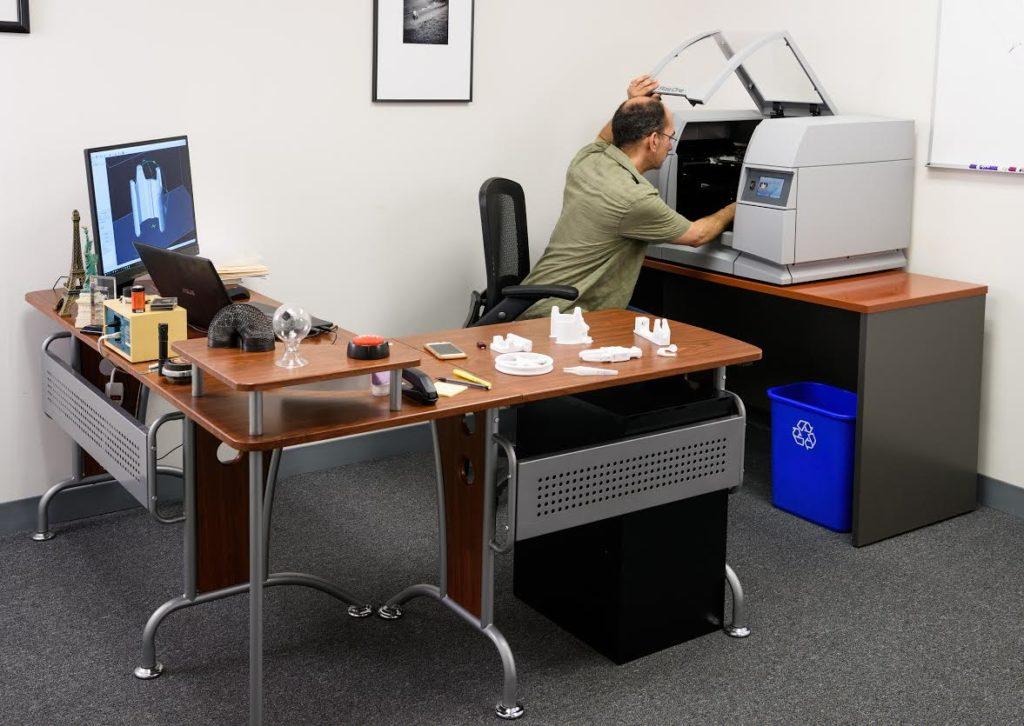
The Rize team all have incredible backgrounds in 3D printing and design; how did you all come together to form Rize?
Our founder, Eugene Giller, had left Z Corporation and was inventing the technology out of his home. He recruited Tom Davidson, our VP of Engineering who worked with Eugene at Z Corp., to make his invention a reality. At about the same time, I left Stratasys and was exploring new opportunities. I heard about what Eugene and Tom were developing, recognized the enormous benefit and resulting market potential and said, “Sign me up.” With most of us having worked at Z Corp. and Objet for many years and being situated in the Boston area, which is the world hub for 3D printing, we were able to hand pick the best 3D printing software, materials, mechanical engineering, customer support and marketing talent in the industry. We’ve truly assembled a 3D printing dream team.
Rize has been operating in stealth for two years; can you tell us about that time?
We were seed funded in late 2014, with $4 million from Longworth Venture Partners and SB Capital. We’ve used that investment to move into office and lab space, hire our core team and refine the technology. We’re now entering beta with several well-known companies, including Reebok.
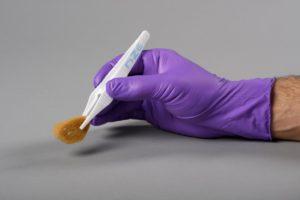 Was eliminating the need for post-processing a primary goal from the beginning?
Was eliminating the need for post-processing a primary goal from the beginning?
Despite the continued evolution of 3D printing, the technology’s promise has been greater than the real-world use. Especially for those who depend on prototyping to help fuel innovation and for those who see the potential for on-the-go production parts. Until this point, users had to make sacrifices throughout the process, from file to part. Whether for speed or ease of use, safety or strength, cleanliness or software complexity, they simply couldn’t have it all – regardless of whether they used a desktop or large, expensive machine operating in a lab.
We set out to eliminate those sacrifices by developing a platform that sets a new standard for turnaround speed and ease of use in industrial machines that can exist as comfortably and safely on desktops as they can in lab environments. With zero post-processing, Rize delivers parts in less than half the time. That, in addition to zero toxic emissions and industrial-quality parts that are 2x stronger than similar machines, provides efficiency of location and confidence in prototype reliability while eliminating health concerns.
Eliminating post-processing is one of, and probably the most appreciated, benefits of our technology. For years, engineers have complained about the various post-processing materials and methods, which leave 3D printed products sitting for hours, if not days, before they can be evaluated, tested, improved and used. With parts available for immediate use after printing, Rize opens a world of possibilities. An updated prototype for a critical meeting tomorrow morning. An idea sent to a desktop overseas for evaluation that same day. A manufacturing engineer keeping the assembly line humming by creating a custom tool in a few hours. A mechanic printing and installing a custom part while you wait. A direct link to a CT scanner that turns images to accurate replicas of body parts on demand. Whether hastening time to market or time to install, the impact is dramatic.
Zero post-processing also eliminates the hassles that frustrate users, keeping focus on the creativity that’s essential to innovation and production. Gone are the messy and toxic post-processing materials, the special hookups and space required for post-processing devices and, most importantly, the hours of expensive labor required to deal with all of it.
In layman’s terms, how does the Augmented Polymer Deposition technology work to eliminate post-processing?
Our patented APD technology involves the simultaneous extrusion of engineering- and medical-grade thermoplastic and the jetting of special inks that can change the material properties of the thermoplastic voxel (3D pixel) by voxel. This enables a myriad of capabilities and applications, but one of these is the elimination of post-processing. After the thermoplastic support is created, a layer of Release One ink is jetted between the support and the first layer of the part. The release ink is just enough to prevent the part from slipping during printing, but enables the user to simply release the part from its support in seconds with their bare hands in a typical office environment, without mess, chemicals, special facility or storage requirements or sanding/filing.
In fact, we tested the support removal of the same part built on a Rize One 3D printer and a Stratasys uPrint, which requires the part to be immersed in a chemical solvent in order to remove the support. While the Stratasys part required 3 hours for the support to dissolve (and had to be done in a lab environment), the Rize support was removed in 25 seconds at the user’s desk. This represents enormous time and cost savings.
How did Reebok and Rize come to work together?
Gary Rabinovitz, Additive Manufacturing Lab Manager at Reebok, first saw our technology at the Additive Manufacturing User Group (AMUG) meeting last year. Known for being a technology innovator, as well as an additive manufacturing expert and super user, Gary recently visited Rize to see our facility, the printer and meet the team, many of whom Gary has known for years at former 3D printing companies, Z orporation (later acquired by 3D Systems) and Objet (later acquired by Stratasys). Gary immediately recognized the value that our technology and team could have on product design and development at Reebok, as well as the 3D printing industry.
He said, “We run our 3D printers 24/7 to create the parts central to Reebok’s innovation, and, unfortunately, post processing has been a necessary but laborious and time-consuming process. An easy-to- use, zero post-processing 3D printer like Rize would dramatically improve workflow, enabling us to deliver parts as much as 50% faster than similar technologies while reducing the cost of labor, materials and equipment.”
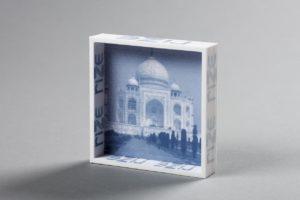 Is the Rize One initially targeted for specific industries that might benefit most from the lack of post-processing?
Is the Rize One initially targeted for specific industries that might benefit most from the lack of post-processing?
Rize transforms how products are designed and manufactured across a broad range of industries – from footwear and sporting equipment to consumer goods, aerospace, automotive, government agencies, medicine, architecture and many more – opening up a world of possibilities for those who depend on prototyping to help fuel innovation, for those who see the potential for on-the- go production parts and those who produce a limited quantity of customized end-use parts.
For many across industries, 3D printing hasn’t been viable or optimized because it wasn’t robust enough for the application, it wasn’t safe enough to use on the desktop in an office or the time and hassles of post-processing severely limited its use and effectiveness.
Rize One delivers a completely hassle-free, office-safe and affordable commercial-quality 3D printing solution that produces a usable part faster than any other method. This makes our solution ideal for a wide variety of commercial applications across a growing number of markets to improve designs, increase accuracy, cut costs, streamline operations and speed time to market.
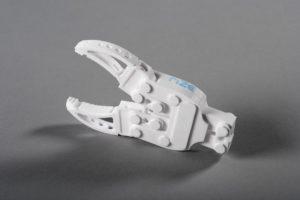 Is the Rize One intended primarily for prototyping use, or will its use extend into finished parts? What material capabilities are possible?
Is the Rize One intended primarily for prototyping use, or will its use extend into finished parts? What material capabilities are possible?
Since our compound of engineering- and medical-grade thermoplastic, Rizium™ One, is 2X stronger than the materials used by FDM systems, Rize technology is suitable for prototypes, tooling, fixtures and jigs for manufacturing and limited-run, customized end-use parts.
Due to the way that the material bonds during the printing process, Rizium One is able to retain much of its isotropic properties, which means that the parts printed in this material have almost the same strength in all directions (X, Y and Z). This differs from most 3D printing technologies, which are unable to create parts that are as strong in the Z-axis, due to the weak bonds between each layer of material. Parts made with the Rize One only experience a 10 percent loss in isotropic properties, compared to the stock material. Typical FDM parts, on the other hand, lose around 40 percent of their Z-strength.
We are able to jet an additive of our choice at each voxel. Our IP is based on thermoplastic extrusion and then jetting an additive on each voxel wherever it makes sense to change the characteristic of that material. Due to the inkjet print head, it’s possible to bind thermoplastic filament with functional inks. For easy support removal, this is Release One, but, our beta version of Rize One will also come with the ability to 3D print detailed text and images with Marking Ink. This ink is jetted anywhere and anytime it’s called for in the file to print directly onto parts. In future releases, this ability will be expanded to encompass the complete CMYK color profile for full, photorealistic color 3D printing.
We will also come out with other functional materials, such as conductive, thermo-insulating and thermo-conducting inks. You can immediately imagine what else we can do with voxel-level 3D printing. You can create active smart sensors so that you can actually have a 3D printed part that has active materials in it. You can create a battery within a 3D printed structure. The sky’s the limit. One specific application we’re working on is the ability to change the mechanical properties of the plastic by coating it with a flexible additive in order to produce comfortable, but effective hearing aids. Many of the world’s hearing aids today are 3D printed with SLA technology, which limits the structure of the device to one material property. We’ll be able to 3D print them in such a way that the interior channel of the aid is rigid, so that sound can bounce through the hearing canal, while the exterior is coated in soft, flexible material so that it fits comfortably within a wearer’s ear.
The Rize One is set for commercial release later this year; is there any announcement yet on a more specific timeline and/or pricing?
We are entering into beta in August. We plan to begin taking orders in September of 2016 and start shipping in late Q4 2016 or early Q1 2017. The price of Rize™ is $19,000 USD. The complete package (consumables and table) is priced at $25,000 USD.
What else should we know about Rize and the Rize One? Can you tell us any future plans?
Despite the fact that Rize’s APD is an industrial-grade 3D printing platform, our process is completely safe and environmentally-friendly, from file to finished part. Our materials are safe, Green and recyclable and, unlike other desktop 3D printers, Rize One does not emit any harmful particles.
Moving forward, you can expect new materials, new 3D printers, and some very exciting applications.
Rize seems poised for success in the industry — and we will certainly be keeping an eye out for all future developments from this company as they release the Rize One later this year and continue to develop their Augmented Polymer Deposition technology. Discuss further in the Rize One 3D Printer / CEO Interview forum over at 3DPB.com.
[All images provided to 3DPrint.com from Rize; ©2016 Jon Chomitz Photography]Subscribe to Our Email Newsletter
Stay up-to-date on all the latest news from the 3D printing industry and receive information and offers from third party vendors.
You May Also Like
Gorilla Sports GE’s First 3D Printed Titanium Cast
How do you help a gorilla with a broken arm? Sounds like the start of a bad joke a zookeeper might tell, but it’s an actual dilemma recently faced by...
Nylon 3D Printed Parts Made More Functional with Coatings & Colors
Parts 3D printed from polyamide (PA, Nylon) 12 using powder bed fusion (PBF) are a mainstay in the additive manufacturing (AM) industry. While post-finishing processes have improved the porosity of...
$25M to Back Sintavia’s Largest Expansion of Metal 3D Printing Capacity Since 2019
Sintavia, the digital manufacturing company specializing in mission-critical parts for strategic sectors, announced a $25 million investment to increase its production capacity, the largest expansion to its operations since 2019....
Velo3D Initiates Public Offering in a Bid to Strengthen Financial Foundations and Drive Future Growth
Velo3D (NYSE: VLD) has been among a number of publicly traded 3D printing firms that have attempted to weather the current macroeconomic climate. After posting a challenging financial report for 2023,...


